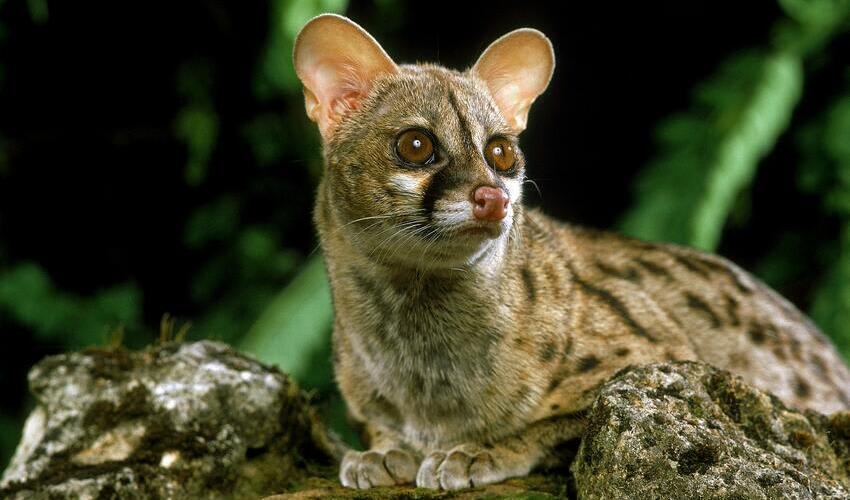Native to Africa and widely spread across the continent, the common genet found its way to the Iberian Peninsula and France, where it has established itself as the only genet species in Europe. This expansion beyond its African origins into Europe is a testament to its versatile survival skills in various habitats, from dense forests and scrublands to the proximity of human settlements.
Characterized by its slender body and strikingly long tail, which typically measures almost the same as its head and body combined, the common genet exhibits a range of physical adaptations that aid in its nocturnal lifestyle. The body length of these animals varies from 40 to 60 cm (about 15 to 24 inches), with their tails adding an additional 40 to 50 cm (15 to 20 inches), providing balance and agility as they navigate through the trees and on the ground.
The fur of the common genet is a marvel in itself, with a color palette that blends seamlessly with its surroundings. The iris of their eyes mirrors the hue of their fur, enhancing their camouflage. Their large eyes are equipped with elliptical pupils, optimizing their vision in low-light conditions and making them formidable hunters under the cover of night. The delicate hair covering the inside and outside of their pinnae (the external part of the ears) serves as protection and a sensory tool, capturing the slightest sounds of prey or predators. Remarkably, these animals can rotate their pinnae by approximately 80 degrees, which allows them to accurately pinpoint sounds.
The genet’s rhinarium, the moist, naked surface around the nostrils, plays a crucial role in its sensory perception. This specialized structure enhances their sense of smell and touch, enabling the genet to detect the faintest scents and the slightest vibrations in its environment. Such sensory adaptations are vital for hunting and navigating their habitat, whether foraging on the ground or creeping through the branches.
Distribution
 Algeria
Algeria Andorra
Andorra Angola
Angola Belgium
Belgium Benin
Benin Botswana
Botswana Burkina Faso
Burkina Faso Cameroon
Cameroon Central Af. Rep.
Central Af. Rep. Chad
Chad Côte D’ivoire
Côte D’ivoire Djibouti
Djibouti Egypt
Egypt Eritrea
Eritrea Ethiopia
Ethiopia France
France Gambia
Gambia Germany
Germany Ghana
Ghana Guinea
Guinea Italy
Italy Kenya
Kenya Lesotho
Lesotho Libya
Libya Mali
Mali Mauritania
Mauritania Morocco
Morocco Mozambique
Mozambique Namibia
Namibia Netherlands
Netherlands Niger
Niger Nigeria
Nigeria Oman
Oman Portugal
Portugal Saudi Arabia
Saudi Arabia Senegal
Senegal Somalia
Somalia South Africa
South Africa Spain
Spain Sudan
Sudan Switzerland
Switzerland Tanzania
Tanzania Togo
Togo Tunisia
Tunisia Uganda
Uganda Yemen
Yemen Zambia
Zambia Zimbabwe
ZimbabweAnything we've missed?
Help us improve this page by suggesting edits. Glory never dies!
Suggest an editGet to know me
Terrestrial / Aquatic
Altricial / Precocial
Polygamous / Monogamous
Dimorphic (size) / Monomorphic
Active: Diurnal / Nocturnal
Social behavior: Solitary / Pack / Herd
Diet: Carnivore / Herbivore / Omnivore / Piscivorous / Insectivore
Migratory: Yes / No
Domesticated: Yes / No
Dangerous: Yes / No




